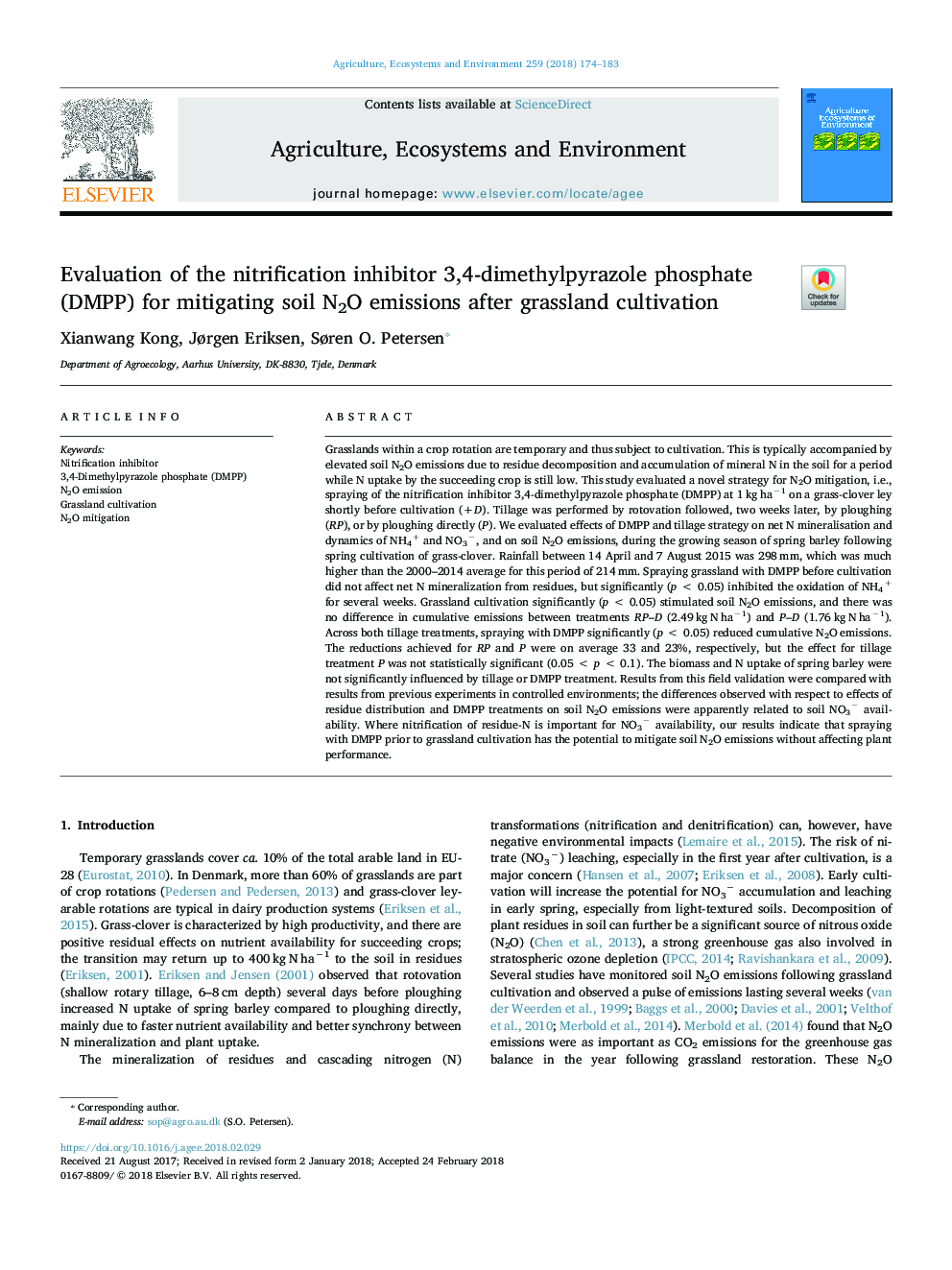| Article ID | Journal | Published Year | Pages | File Type |
|---|---|---|---|---|
| 8487107 | Agriculture, Ecosystems & Environment | 2018 | 10 Pages |
Abstract
Grasslands within a crop rotation are temporary and thus subject to cultivation. This is typically accompanied by elevated soil N2O emissions due to residue decomposition and accumulation of mineral N in the soil for a period while N uptake by the succeeding crop is still low. This study evaluated a novel strategy for N2O mitigation, i.e., spraying of the nitrification inhibitor 3,4-dimethylpyrazole phosphate (DMPP) at 1â¯kgâ¯haâ1 on a grass-clover ley shortly before cultivation (+D). Tillage was performed by rotovation followed, two weeks later, by ploughing (RP), or by ploughing directly (P). We evaluated effects of DMPP and tillage strategy on net N mineralisation and dynamics of NH4+ and NO3â, and on soil N2O emissions, during the growing season of spring barley following spring cultivation of grass-clover. Rainfall between 14 April and 7 August 2015 was 298â¯mm, which was much higher than the 2000-2014 average for this period of 214â¯mm. Spraying grassland with DMPP before cultivation did not affect net N mineralization from residues, but significantly (pâ¯<â¯0.05) inhibited the oxidation of NH4+ for several weeks. Grassland cultivation significantly (pâ¯<â¯0.05) stimulated soil N2O emissions, and there was no difference in cumulative emissions between treatments RP-D (2.49â¯kgâ¯Nâ¯haâ1) and P-D (1.76â¯kgâ¯Nâ¯haâ1). Across both tillage treatments, spraying with DMPP significantly (pâ¯<â¯0.05) reduced cumulative N2O emissions. The reductions achieved for RP and P were on average 33 and 23%, respectively, but the effect for tillage treatment P was not statistically significant (0.05â¯<â¯pâ¯<â¯0.1). The biomass and N uptake of spring barley were not significantly influenced by tillage or DMPP treatment. Results from this field validation were compared with results from previous experiments in controlled environments; the differences observed with respect to effects of residue distribution and DMPP treatments on soil N2O emissions were apparently related to soil NO3â availability. Where nitrification of residue-N is important for NO3â availability, our results indicate that spraying with DMPP prior to grassland cultivation has the potential to mitigate soil N2O emissions without affecting plant performance.
Keywords
Related Topics
Life Sciences
Agricultural and Biological Sciences
Agronomy and Crop Science
Authors
Xianwang Kong, Jørgen Eriksen, Søren O. Petersen,
